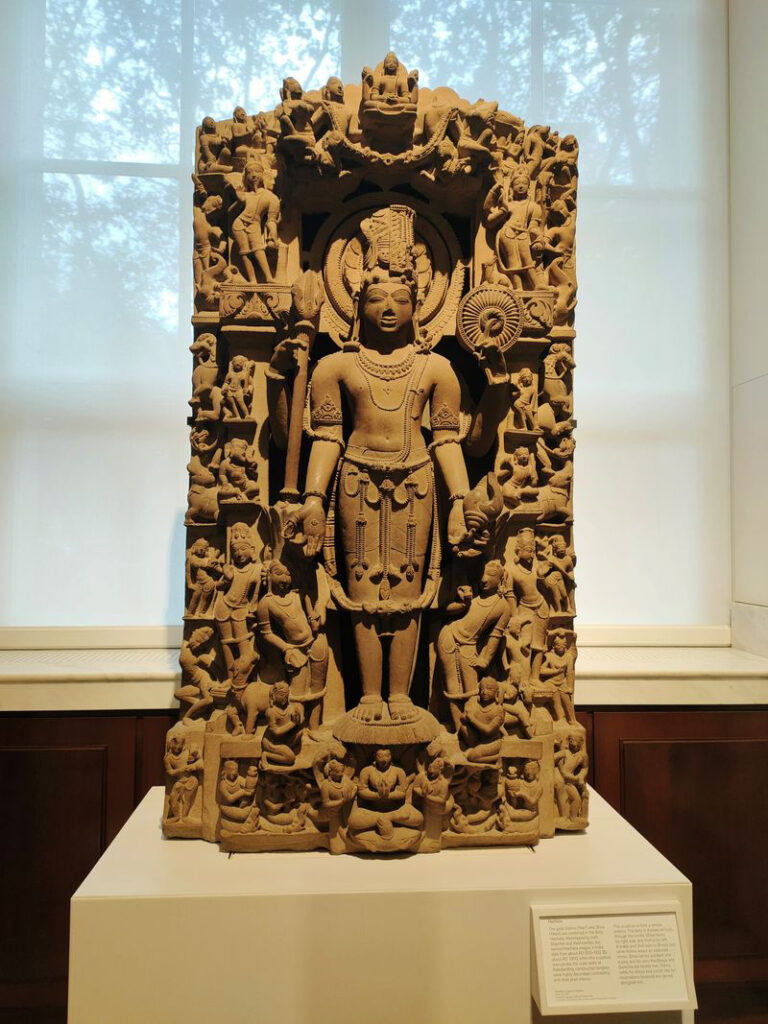IIGRS 13 in Cambridge
by Olli-Pekka Littunen, Arya Adityan, and Kexin Zheng
Published on November 16, 2023
Arya Adityan, Olli-Pekka Littunen, and Kexin Zheng had the opportunity to present their research at the 13th IIGRS (International Indology Graduate Research Symposium), organized at the Faculty of Asian and Middle Eastern Studies at the University of Cambridge. The symposium was attended by various scholars in the field of Indology, also beyond graduate level, and all the participants had the opportunity to bounce ideas off of other scholars, surely resulting in further insights into their respective research projects. The scope of the papers presented at the symposium was quite broad, covering a large range of Indological research topics. Also, a fascinating keynote lecture about epigraphical research into the Malayaketu kingdom of the 9th-11th centuries CE was given by Prof. Diwakar Acharya (All Souls College, Oxford).

Arya Adityan presented a paper on the representations of boars in the Sanskrit text of the early Skandapurāṇa, the Tulu Pāḍdanas that narrate the stories of Tulu spirits, their origin and heroic stories, and narratives from the Tamil oral epic, Aṇṇanmār Katai, written around 15th century CE, recounting the story of three twins, two elder brothers and their younger sister. The paper presents a comparative analysis of affective connections and kinship bonds between humans and more-than-human beings in these narratives. Bringing these questions of kinship to bear on ‘Hindu’ literature and material sources takes a first step towards rethinking human/non-human/more than human relationships in South Asia.
Olli-Pekka Littunen spoke about a short text found in a 12th-14th century CE compendium of texts (Vārāṇasīmāhātmyasaṃgraha) praising the greatness of the city of Vārāṇasī as a religious destination. The text in question, attributed in the compendium to the Brahmāṇḍapurāṇa, uses multi-layered terminology to create a rich, high density of meaning. Some of this terminology is associated with Tantric traditions. As the use of such esoteric concepts in Māhātmyas is somewhat unexpected, the central focus of the paper was on the usage, integration, and meaning of esoteric concepts in a text that has a broader non-esoteric appeal.
Kexin Zheng presented a paper on the Śaivization of the tulāpuruṣadāna (‘Gift of the Man on a Balance’) ceremony. Compared with chapter 274 of the Matsyapurāṇa, which has a Vaiṣṇava background, the Śaiva prescriptive texts from the Purāṇas and the Āgamas are less known for the topic of the tulāpuruṣadāna and have been largely overlooked. In her paper, Kexin Zheng compared those Śaiva texts among each other and with the Matsyapurāṇa to illustrate the Śaivization process of the tulāpuruṣadāna. By doing so, she also introduced more nuance to the term ‘Śaivization’ and the cultural-historical contexts of the tulāpuruṣadāna.
The PURANA project participants also had the opportunity to visit museums in London (such as the Victoria and Albert Museum and the British Museum) and view their relevant collections. A punting tour of Cambridge and visiting various colleges in the city were also a nice addition to the trip.

In sum, the symposium was refreshing, and packed with interesting presentations and discussions. A shared dinner on the first day of the symposium helped the presenters to interact in a less formal context as well – although the atmosphere at the symposium itself was not too “formal” in any case, which is a very good thing.
